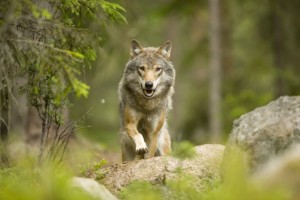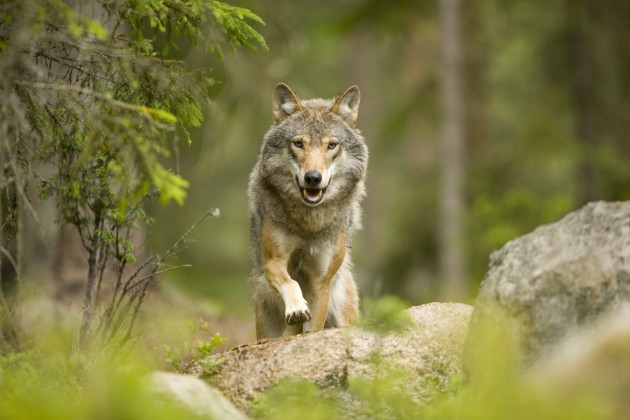
Here we give you some basic and interesting facts about Wolves in Sweden. You will have to follow the links here to get to all of them …
Quick facts about Wolves in Sweden
Scientific name: Canis lupus
Type: Mammal
Size: Up to 90 cm at shoulder
Weight: 35 – 55 kg (male), females on average 10 kg lighter. Scandinavian Grey Wolves are larger than the Wolves of the same species in Southern Europe.
Lifespan: 10-12 years
Appearance: The wolf has a large head and a coarse neck in relation to the size of the body. The basic color of the Scandinavian wolves is grey, with grey-yellow and red-brown varieties in the summer fur. The winter fur is more of grey. The chin and throat are almost always white. They often have black markings on legs, in the face, along their back and a dot halfway down the tail. The front paws are larger than the hind paws, basically because the front part of the body is heavier and therefore needs larger paws. The teeth are adapted to grip, drag, scratch and cross. The Wolf can even break the thighbones of an adult Moose.
Family: Wolves are social animals. They live in family groups, sometimes called packs. A family group typically consist of two parents and their pups. Most of the pups leave the family after nine months, before becoming sexually mature. Some pups may stay for more than one year, but usually not for more than a few months longer. These elder pups may act as baby sits as the elder pups use to remain close to the cubs of the younger generation anyway.
A Wolf couple keeps a distinct home territory where they typically stay for as long as they are an intact couple. The territory is marked out accurately by urine, droppings, scratches and sound calls and is defended actively against trespassing wolves. Fights between family members and trespassing wolves are not uncommon. Wolves may even get killed in such fights.
The size of a Wolf territory may vary considerably. In Scandinavia such sizes have been calculated with the help of snow tracking and radio collaring. A normal home territory measures 800 – 1 000 square kilometers or more than 140,000 football/soccer pitches. In extreme cases the home territory can reach up to 2 000 square kilometers. Access to food and surrounding territories are some of the factors determining the size of the territory. The parents maintain the territory by droppings, by urinating, by scratching markings or by sound calls.
Source: Facts about Wolves
